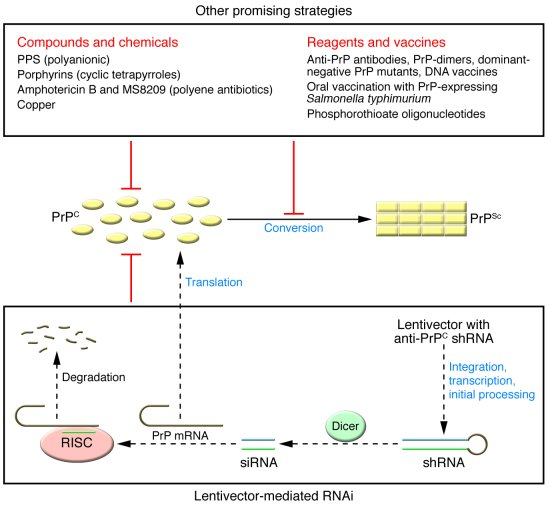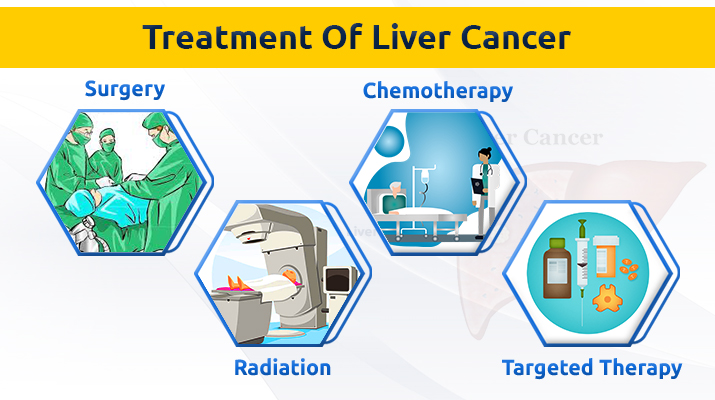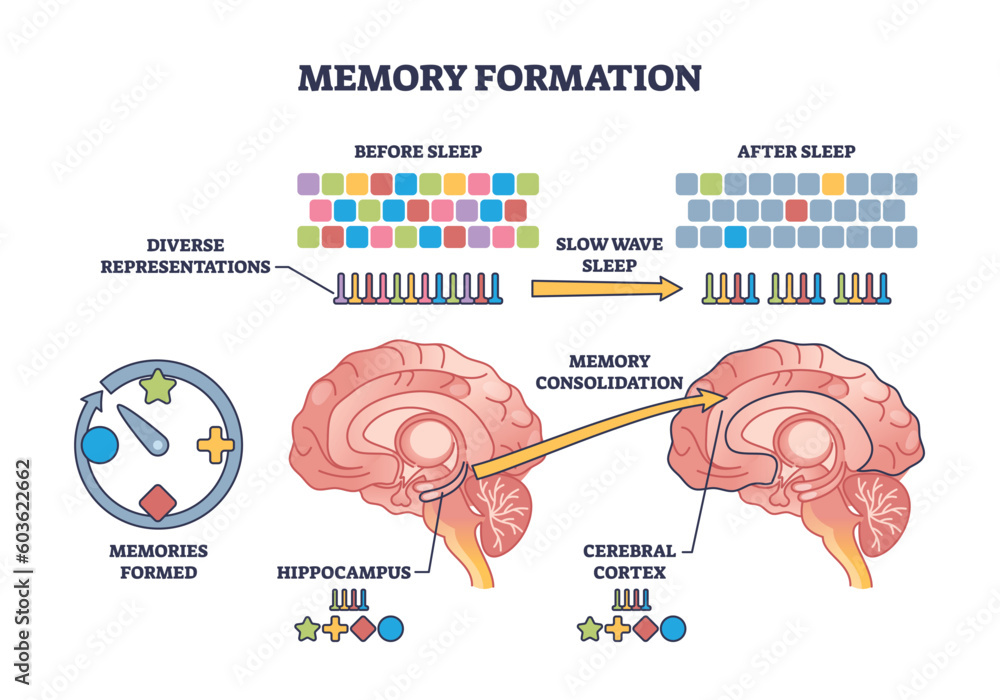Prion disease treatment is an emerging field that has gained significant momentum in recent years, primarily due to groundbreaking research and innovative techniques aimed at tackling these rare yet devastating disorders. Prion diseases, such as Creutzfeldt-Jakob disease and fatal familial insomnia, are caused by misfolded prion proteins that lead to progressive neurodegeneration. Research teams, including prominent figures like Sonia Vallabh and Eric Minikel, are focusing on gene editing therapies that hold promise for reducing the accumulation of these toxic proteins in the brain. Their recent studies have shown remarkable results, hinting at a future where effective treatments for prion diseases could be within reach. The convergence of patient-driven research and advanced scientific methods represents a transformative step toward combating the challenges posed by these fatal conditions.
The quest for prion disorder remedies has evolved significantly, incorporating various therapeutic approaches, one of which includes gene therapy techniques. These neurodegenerative conditions, characterized by the abnormal folding of prion proteins, lead to severe cognitive decline and ultimately, death. Notable researchers in the field are investigating strategies that could potentially modify the genes responsible for these pathologies, such as altering the prion protein gene to prevent its misfolding. Current studies are laying the groundwork for future clinical trials, helping pave the path toward much-needed interventions for disorders like Creutzfeldt-Jakob disease and fatal familial insomnia. As the scientific community rallies around this pressing issue, the hope for viable treatment options gains momentum, driven by both compassion and innovation.
Understanding Prion Disease: An Overview
Prion disease refers to a group of rare but severe neurodegenerative disorders caused by misfolded prion proteins in the brain. These conditions include Creutzfeldt-Jakob disease, fatal familial insomnia, and Gerstmann-Sträussler-Scheinker disease — each leading to debilitating symptoms and cognitive decline. While these diseases remain largely untreatable, ongoing research is beginning to shed light on potential therapeutic avenues, providing hope for patients and their families affected by these fatal conditions. Understanding the pathophysiology of these diseases is crucial for developing effective treatments.
Recent advances in prion disease research have revealed potential links between genetic mutations in the prion protein gene and the onset of certain inherited forms of these diseases. For example, about 15% of prion disease cases can be traced back to inherited mutations, which means that targeted therapies could be developed to address these genetic roots. The increasing collaboration between patient-scientists and researchers is vital, as these personal connections fuel the urgency for effective treatments that could alter the course of prion diseases.
The Role of Gene Editing Therapy in Prion Disease Treatment
Gene editing therapy represents a cutting-edge approach to treating genetic disorders, including prion diseases. Recent developments have demonstrated that altering a single base pair in the gene responsible for producing prion proteins can significantly reduce the amount of these proteins in the brain, as seen in laboratory mice. Such advancements suggest that we might be on the cusp of developing viable treatments for these previously untreatable conditions. As the research progresses, the goal is to translate these findings into human clinical trials, a journey that will ultimately require rigorous testing and validation.
The promise of gene editing therapy in the context of prion disease treatment is compounded by the collaborative efforts of researchers like Sonia Vallabh and Eric Minikel, who have personal stakes in the outcomes of this research. Their journey from law and urban planning to neuroscience has underscored the importance of using gene editing as a therapeutic strategy to combat inherited prion diseases like fatal familial insomnia. The technical expertise combined with the emotional impetus behind their work propels the field forward, promising new hope for those afflicted by these devastating conditions.
Hope for Patients: Personal Stories of Prion Disease Researchers
For many researchers working on prion disease, the quest for treatment is more than a scientific challenge; it is a deeply personal journey. Take, for instance, Sonia Vallabh, who has herself tested positive for an inherited form of prion disease. Her experience, along with that of her husband, Eric Minikel, highlights how those impacted by these fatal conditions are now at the forefront of research efforts. Their story serves as a reminder that behind every scientific endeavor lies human lives, hopes, and stories that motivate researchers to strive for breakthroughs in treatment.
The personal connection these researchers have to prion diseases enhances the urgency of their work. They are not just seeking to advance scientific knowledge but to create tangible solutions for individuals and families facing devastating diagnoses. This unique perspective fosters collaboration and innovation, propelling the field toward potential treatments that could change or extend lives — a process that is as much about compassion and empathy as it is about science.
Current Advances in Prion Disease Research
Prion disease research is entering a promising era of exploration and discovery. The recent findings from studies conducted at the Broad Institute illustrate innovative breakthroughs in gene editing technology, specifically targeting the mechanisms that lead to prion diseases. Through the application of refined techniques like base editing, researchers have successfully demonstrated the ability to significantly reduce prion protein levels in animal models, thereby increasing survival rates. Such successes not only mark significant progress but also lay the groundwork for future human applications.
Despite these encouraging results, researchers remain cautious about the journey ahead toward clinical application. Many challenges remain, including optimizing the delivery systems for gene editors and ensuring safety in humans. However, with ongoing collaborations and a commitment to patient-centered research, the scientific community is optimistic about the potential for effective treatments for conditions like Creutzfeldt-Jakob disease and fatal familial insomnia to emerge in the coming years.
Challenges in Developing Effective Treatments for Prion Diseases
While the advances in prion disease treatment are hopeful, significant challenges linger in the pursuit of effective therapies. The nature of prion diseases — driven by the atypical folding of proteins and their infectious capabilities — complicates the therapeutic landscape. Researchers must navigate these complexities to ensure the safety of new treatments while effectively targeting the underlying causes of disease. The collaborative efforts of scientists across various disciplines aim to meet these challenges head-on.
Additionally, the path from successful animal models to human trials is fraught with regulatory and logistical hurdles. Research efforts require extensive validation to ensure that new treatments are both safe and effective for human patients. The scientific community’s commitment to tackling these hurdles is unwavering, given the critical need for treatment options that can alleviate the suffering of those affected by prion diseases. Every step taken in the laboratory is fueled by the knowledge that behind every statistic is a human story.
The Importance of Collaborative Research in Prion Disease
Collaboration is a cornerstone of progress in prion disease research, where the interplay of diverse expertise enhances the potential for meaningful breakthroughs. By pooling knowledge from neurology, genetics, and molecular biology, researchers can tackle the multifaceted challenges posed by prion diseases. Collaborative efforts like those seen at the Broad Institute bring together patient-scientists and experts, each contributing unique insights that enrich the overall research landscape.
Such partnerships also offer emotional and motivational support, as researchers navigate the complexities of treatment development. The shared goal of finding effective therapies fosters a strong team dynamic that drives innovation. Personal stories, like those of Vallabh and Minikel, remind everyone involved that their work has the potential to transform lives, adding urgency and purpose to the collaborative scientific endeavor.
Future Directions in Prion Disease Therapy
As prion disease research progresses, future directions continue to emerge that could significantly impact patient care. Novel therapeutic strategies are being explored, including enhancements to existing gene editing techniques that seek to improve accuracy and targeting efficiency. Additionally, utilizing advanced bioengineering approaches to develop viral vectors capable of delivering genetic material directly to affected brain cells may pave the way for safer, more effective treatments.
Moreover, the landscape of prion disease research will greatly benefit from ongoing genomic studies aimed at identifying new biomarkers. Understanding individual variations in response to therapies may lead to more personalized treatment options for patients. As the scientific community remains vigilant and dedicated, the hope is that these advancements will culminate in successful therapies that mitigate the devastation caused by prion diseases.
Public Awareness and Education on Prion Diseases
Raising awareness and educating the public about prion diseases is crucial as we strive for advancements in treatment and understanding. Misconceptions regarding these rare disorders can hinder research funding and public support, which are essential for continued progress. By increasing knowledge about prion diseases and their implications, advocates can foster a deeper connection between the scientific community and the public, ultimately benefiting research initiatives.
Educational campaigns that illustrate the impact of prion diseases on individuals and families will galvanize support for research funding and public engagement. As more people become informed about the challenges faced by those living with conditions such as Creutzfeldt-Jakob disease and fatal familial insomnia, there’s potential to enhance funding opportunities and inspire new researchers to join the field. Empowering communities with accurate information is vital for fostering compassion and collaboration in the quest for therapies.
Ethical Considerations in Prion Disease Research
Ethics play an integral role in prion disease research, as scientists navigate the delicate balance between innovation and patient safety. The potential use of human subjects in trials raises critical ethical questions regarding informed consent, particularly for conditions that could lead to rapid cognitive decline. Researchers must diligently consider the implications of their work, ensuring that safety protocols protect participants while advancing knowledge.
Moreover, the handling of prion proteins, due to their infectious nature, requires strict adherence to safety regulations and guidelines. Researchers must remain vigilant in maintaining ethical standards while pushing the boundaries of scientific inquiry. Transparent discussions about these ethical considerations will not only enhance public trust in research but also ensure that patient welfare remains at the forefront of scientific advancements.
Frequently Asked Questions
What advancements have been made in prion disease treatment through research?
Recent advancements in prion disease treatment have shown promising results, particularly in gene editing therapy, as demonstrated by researchers at the Broad Institute of MIT and Harvard. Their study revealed that altering a single base in the gene related to prion proteins can significantly reduce the presence of these harmful proteins in the brain, potentially leading to a 52% extension of lifespan in laboratory mice, offering hope for future therapies in humans.
How does gene editing therapy work for treating prion diseases like Creutzfeldt-Jakob disease?
Gene editing therapy, particularly through the use of single base editing technology, can modify the genetic instructions that produce prion proteins. This approach targets the gene responsible for misfolded proteins, which are central to the pathology of Creutzfeldt-Jakob disease and other prion diseases, thereby reducing the harmful protein levels and potentially alleviating symptoms.
Are there any ongoing clinical trials for prion disease treatment?
While significant progress has been made in prion disease research, particularly with the development of gene editing therapies, clinical trials for these treatments are still years away. Researchers are focused on refining the base editing techniques and ensuring the safety of the delivery methods before moving into human trials.
What is the relationship between prion disease research and patient involvement?
Patient involvement plays a crucial role in prion disease research. Many researchers, such as Sonia Vallabh, who personally faces an inherited form called fatal familial insomnia, drive the research forward with a unique perspective and motivation, ensuring that patient needs are central to the development of effective treatments for prion diseases.
What challenges do researchers face in developing treatments for prion diseases?
Researchers face numerous challenges in developing treatments for prion diseases, including the complexity of safely delivering gene editing therapies, the need to refine these technologies for effective targeting, and regulatory hurdles that delay the start of human clinical trials. Safety concerns regarding the infectious nature of prion proteins also complicate research efforts.
How does fatal familial insomnia relate to prion disease treatment advancements?
Fatal familial insomnia is a form of prion disease that exemplifies the potential benefits of advances in prion disease treatment. The gene editing therapies being developed aim to target the same genetic abnormalities that lead to this and other prion disorders, with research focused on reducing harmful protein production and eventually offering hope to affected individuals.
| Key Points | Details |
|---|---|
| Research Published | April 2025 research published in Nature Medicine shows potential treatment for prion disease. |
| Gene-Editing Therapy | Altered a single gene base to cut prion protein levels by 50% in mice, increasing lifespan by 52%. |
| Personal Motivation | Sonia Vallabh, a co-author, is a patient with fatal familial insomnia, propelling her scientific pursuit. |
| Challenges Ahead | Several steps remain before human trials, including refining gene editor and ensuring safety of delivery method. |
| Collaborative Efforts | Collaboration between patient-scientists and established researchers fosters inspiration and targeted research. |
| Next Steps | Focus on improving vector targeting, safety, and drug delivery method for gene-editing therapy. |
Summary
Prion disease treatment is on the horizon as recent research highlights significant advances in gene-editing therapies. By successfully altering a single genetic base, researchers demonstrated a remarkable ability to reduce harmful prion proteins in laboratory mice, effectively extending their lifespan. This pioneering work, motivated by personal experiences of the researchers, showcases hope that with continued collaboration and innovation, effective treatments may become available in the near future. Given the complexity of prion diseases, persistent support and research could ultimately lead to groundbreaking therapies for initiating effective prion disease treatment in humans.




